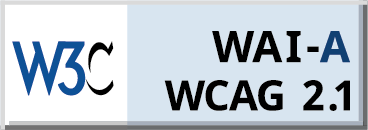What are some of the common challenges in candidate shortlisting?
- Time-Consuming Selection Process: Reviewing resumes, conducting interviews, and evaluating candidates can be a tedious task. Recruiters often struggle to maintain objectivity and consistency throughout the evaluation process.
- Subjective Decision-making: The lack of a standardized candidate evaluation approach often leads to subjective decision-making. Without a clear framework for comparing applicants, recruiters may inadvertently miss out on top talent or make biased decisions.
- Identifying the Best-fit Candidate: Differentiating between qualified candidates can be challenging, especially when their skills and experiences closely align. Recruiters need a system that enables them to rank candidates based on specific criteria and identify the best-fit individual for the role.
What is stack ranking?
Stack ranking is a performance assessment method that involves evaluating and ordering employees or candidates based on their performance compared to others. This process generates categories like high, medium, and low achievers. It aims to recognize top talent and help in decision making.
Why is stack ranking important in the hiring process?
Recruiting the right talent is crucial for any organization's success. Yet, with a large pool of candidates, making informed hiring decisions can be overwhelming for recruiters and hiring managers. Ensuring the quality of the candidate funnel is very important in hiring the right candidates.
How can Talview’s stack ranking help in faster decision making?
Stack ranking serves as an effective approach that streamlines the candidate evaluation process, enabling recruiters to make precise and well-informed selections, thus optimizing hiring decisions. Here’s how stack ranking can help:
- Efficient Candidate Evaluation: Talview’s stack ranking views and flexibility offer a systematic approach to assessing candidates through direct comparison. By placing candidates in order of merit, recruiters can quickly identify top performers and efficiently eliminate less suitable applicants.
- Objective Decision-making: With stack ranking, recruiters have a consistent framework for evaluating candidates, mitigating the impact of bias in the selection process. This fosters an inclusive hiring environment, ensuring the most deserving candidates are considered for the role.
- Enhanced Collaboration: Stack ranking facilitates seamless collaboration among the recruiting team. By using a standardized system, recruiters can easily share insights, discuss candidates' strengths and weaknesses, and collectively reach well-informed decisions.
- Prioritization of Top Talent: In a competitive job market, top talent is often in high demand. Stack ranking enables recruiters to identify and prioritize the most qualified candidates, ensuring they receive timely communication, reducing the risk of losing them to competitors.

Key Features of Talview ’s stack ranking
- Using standardized measurement techniques to assess candidates' response accurately.
- Utilizing sorting and advanced filters to concentrate on the most relevant candidate pool.
- Providing skill and sub-skill level scoring views for comprehensive candidate assessment.
- Allowing users to create personalized weighted or magic scores to further rank candidates.
- Offering clear indications of average, median, recommended, and percentile-based scores to expedite decision-making.
Through these powerful features with stack ranking, Talview empowers recruiters to embrace stack ranking as a strategic tool in navigating the complexities of candidate assessment and selection.







Leave a Reply